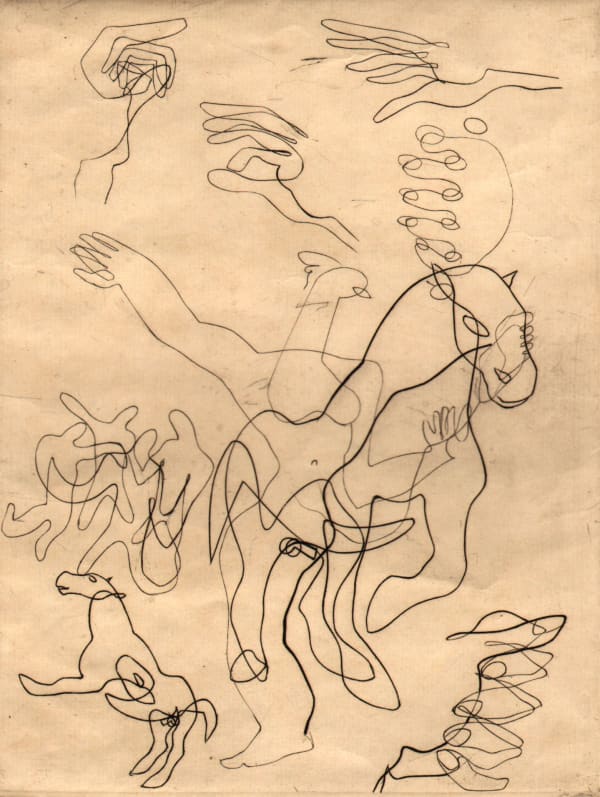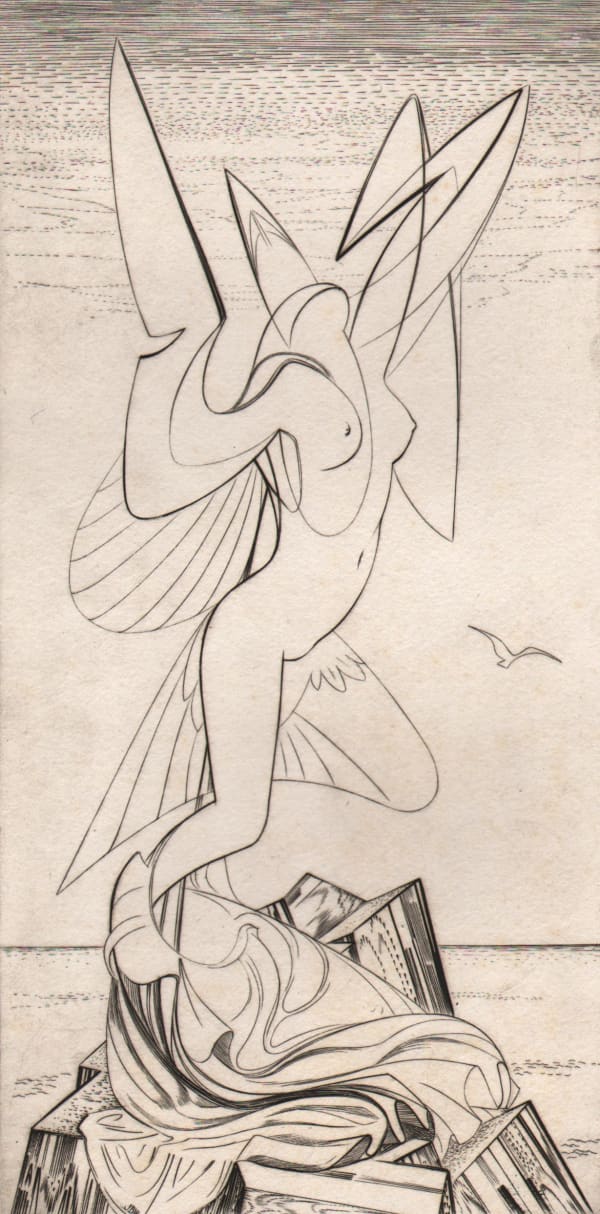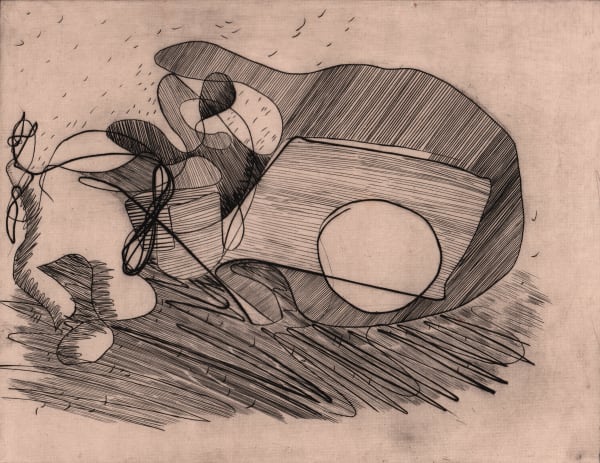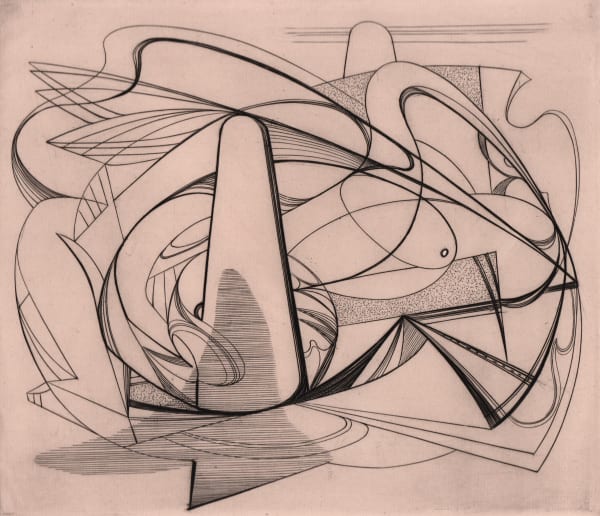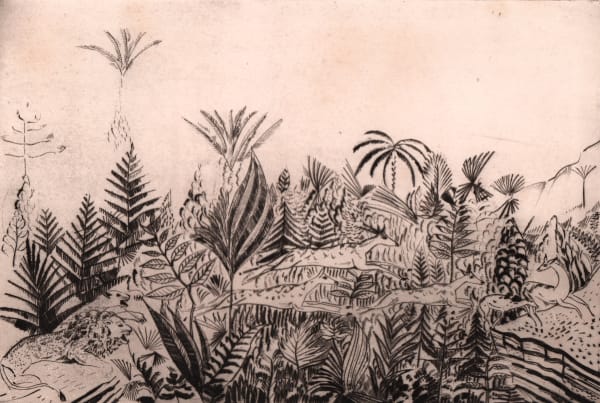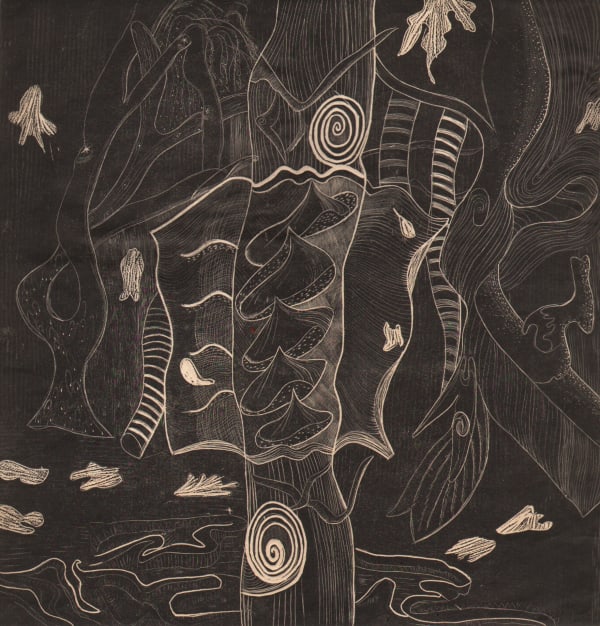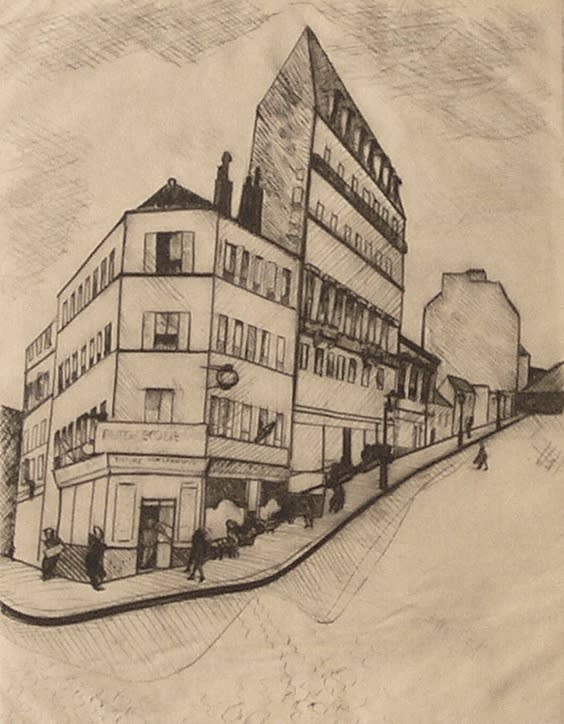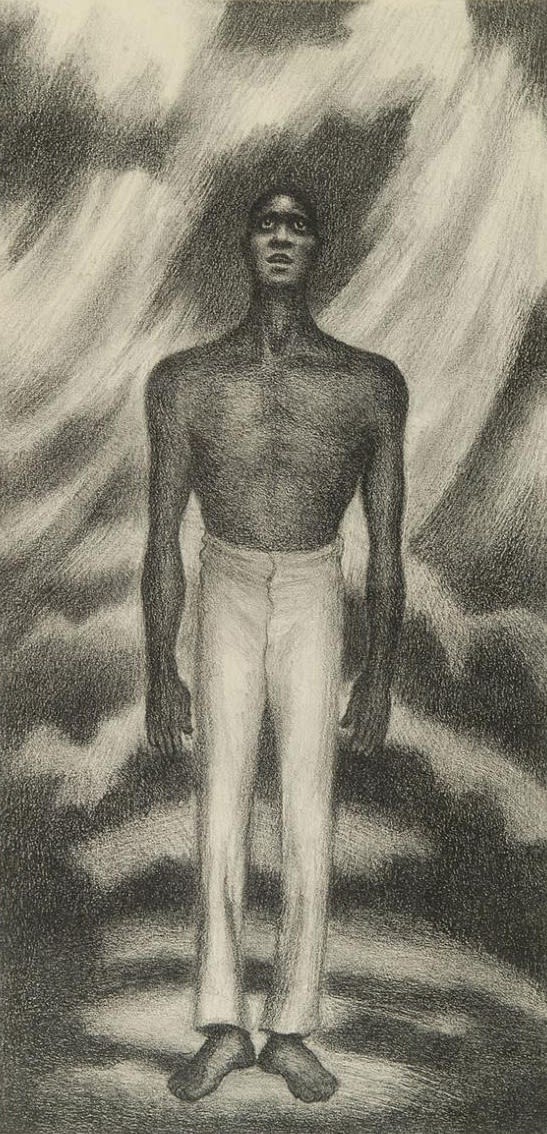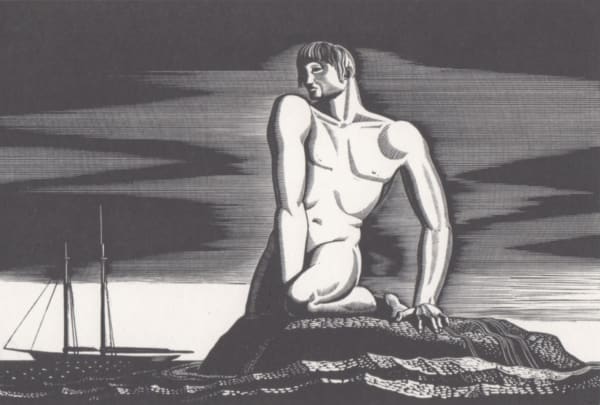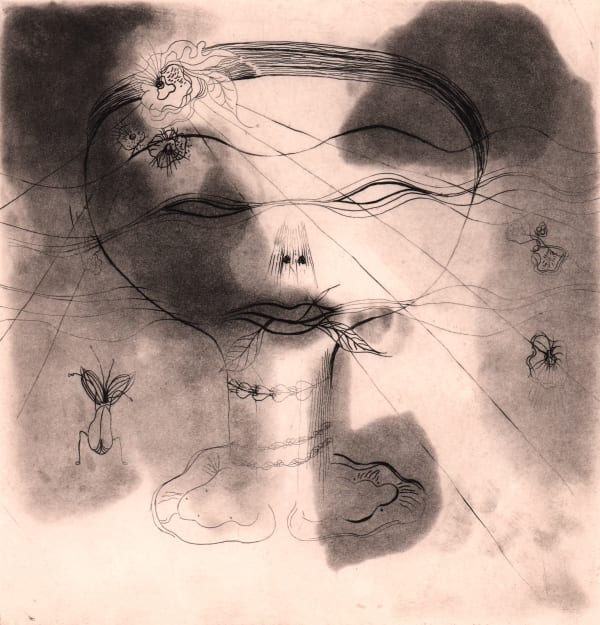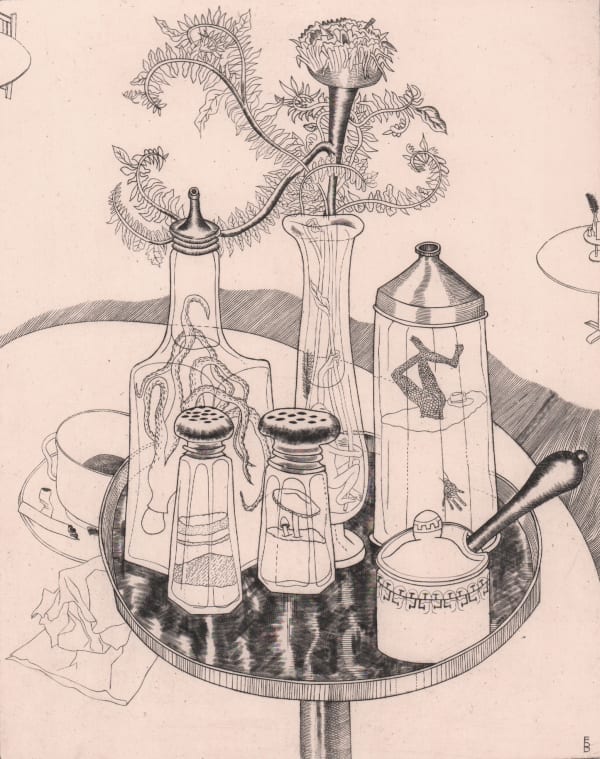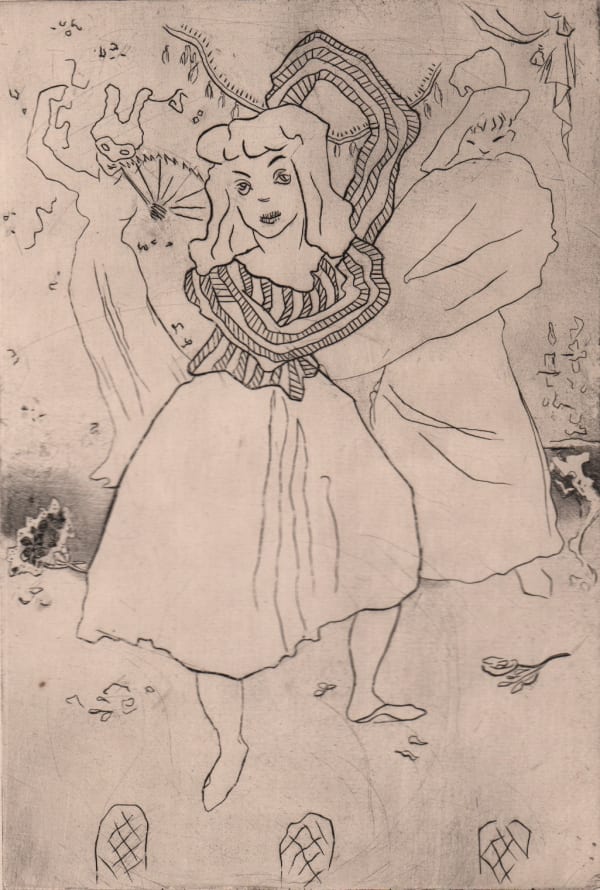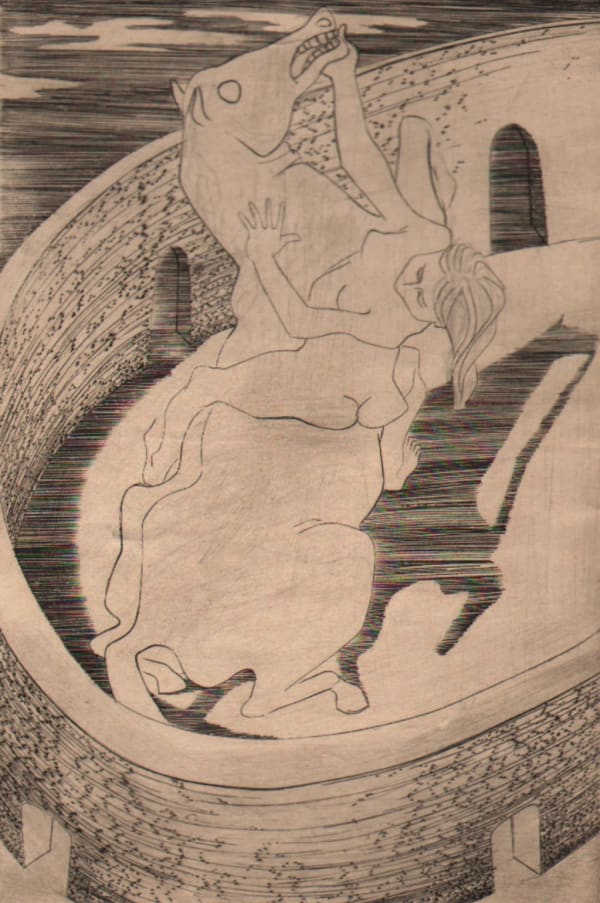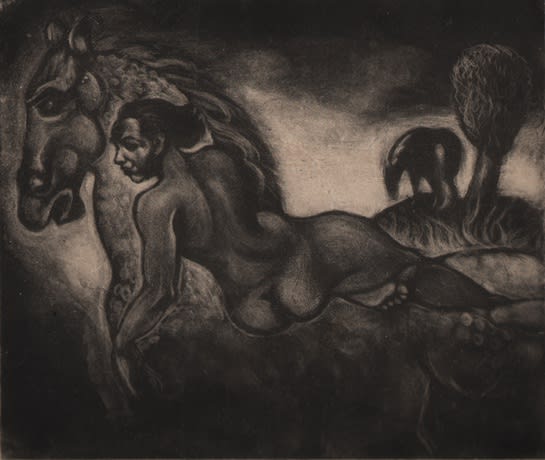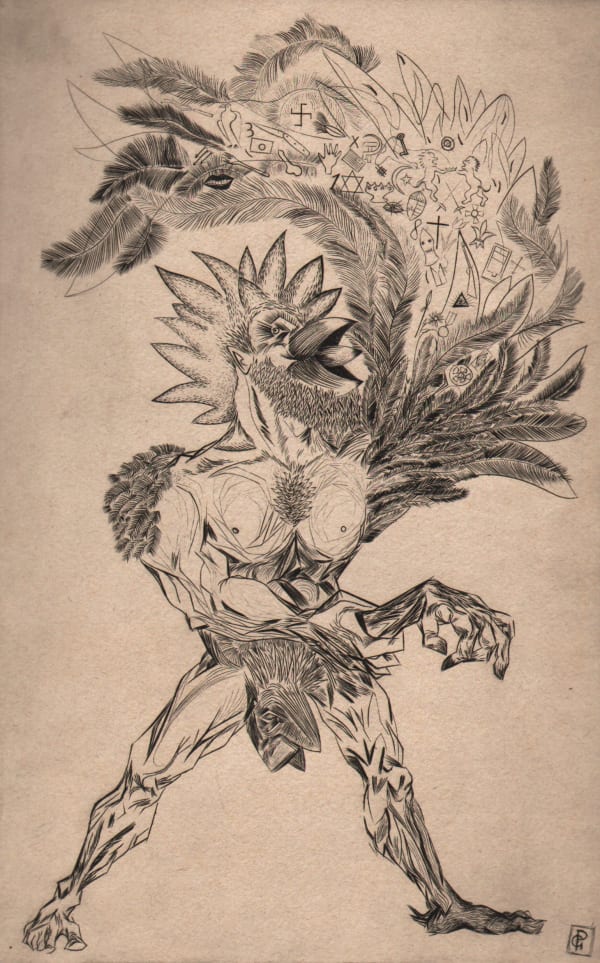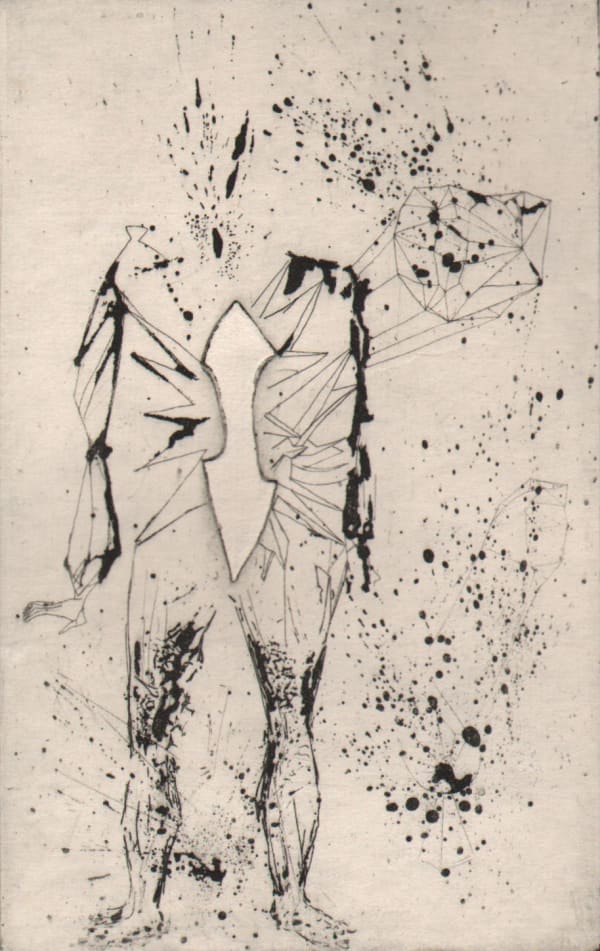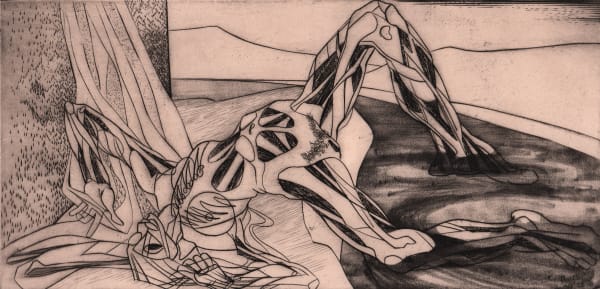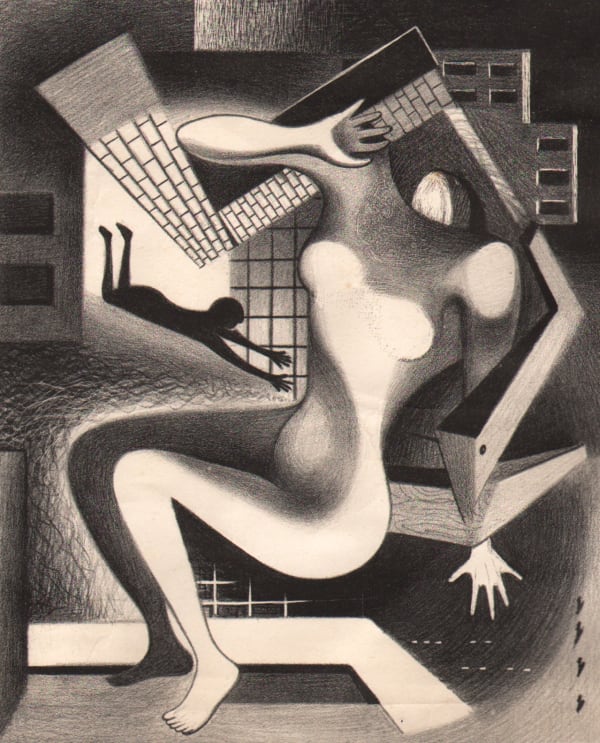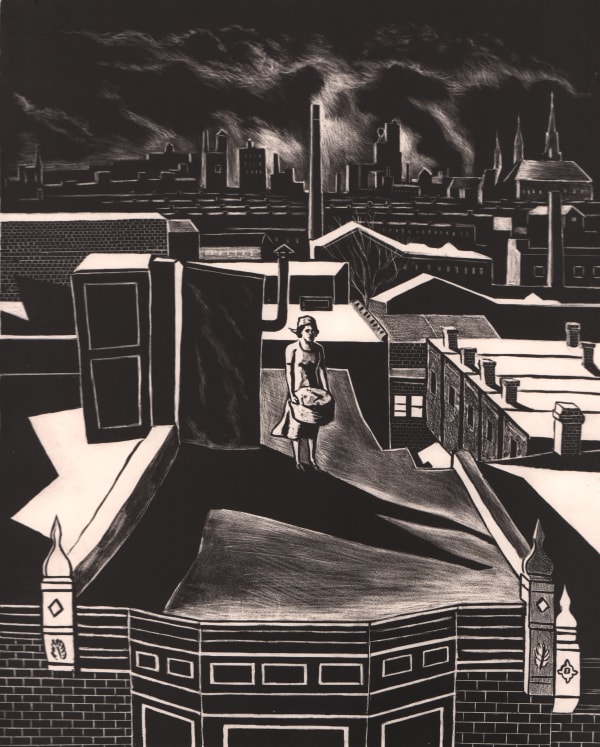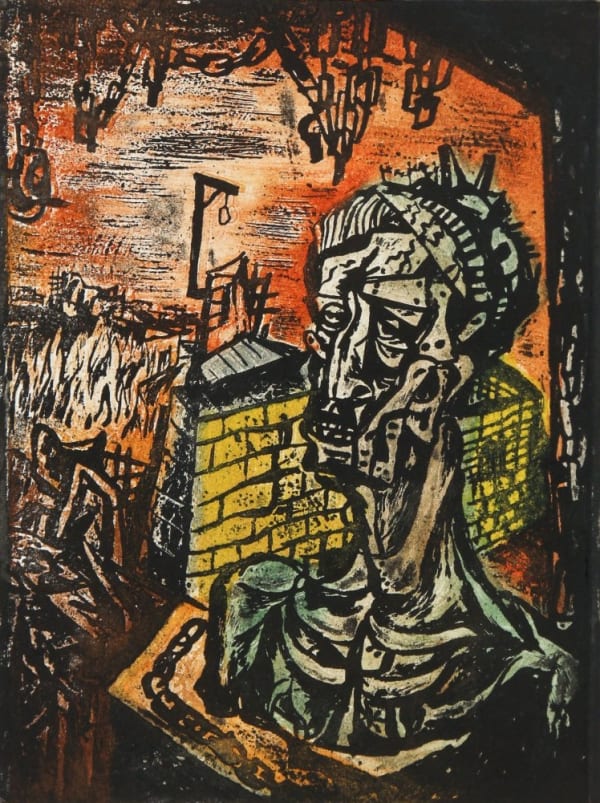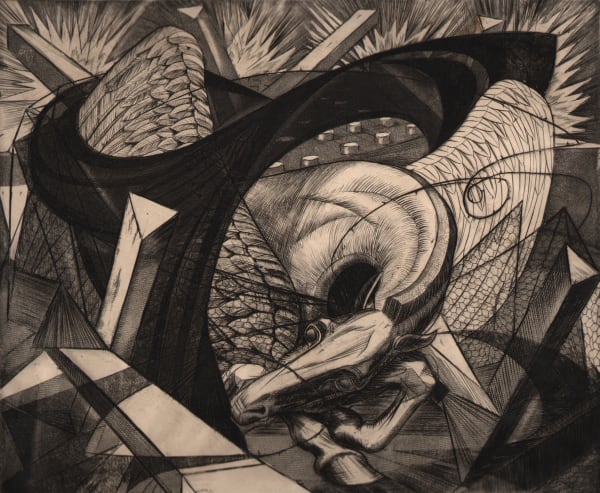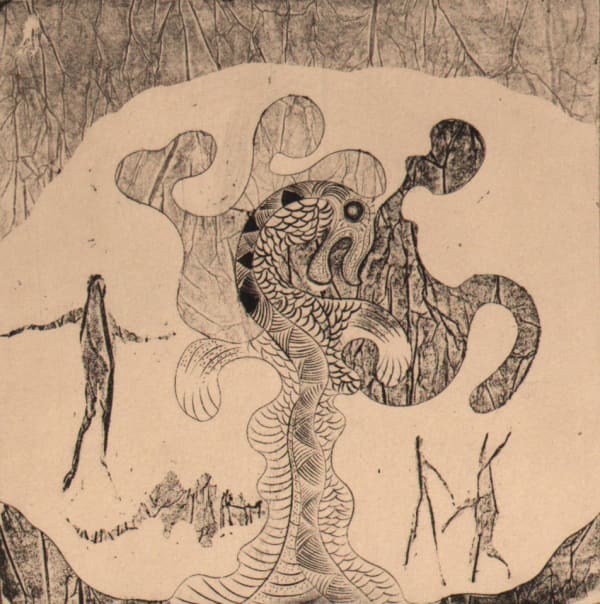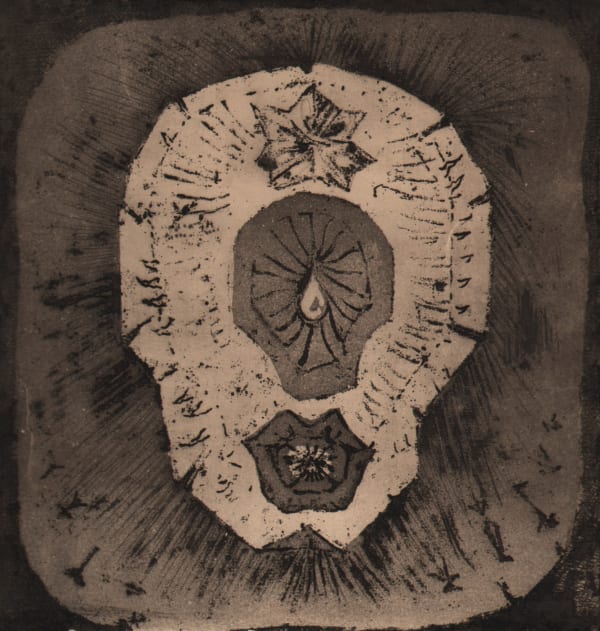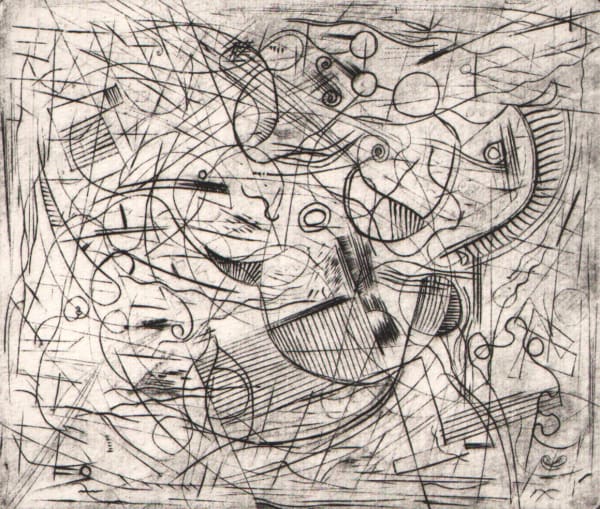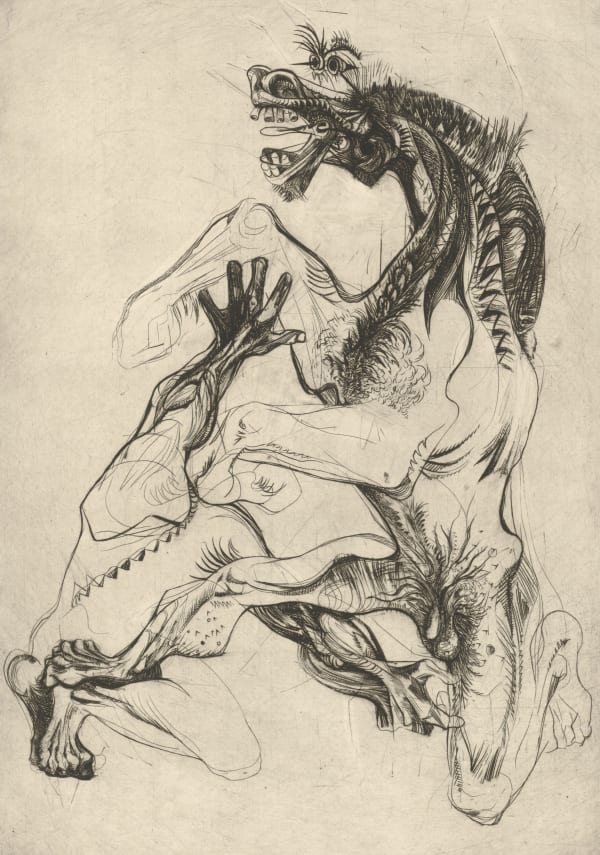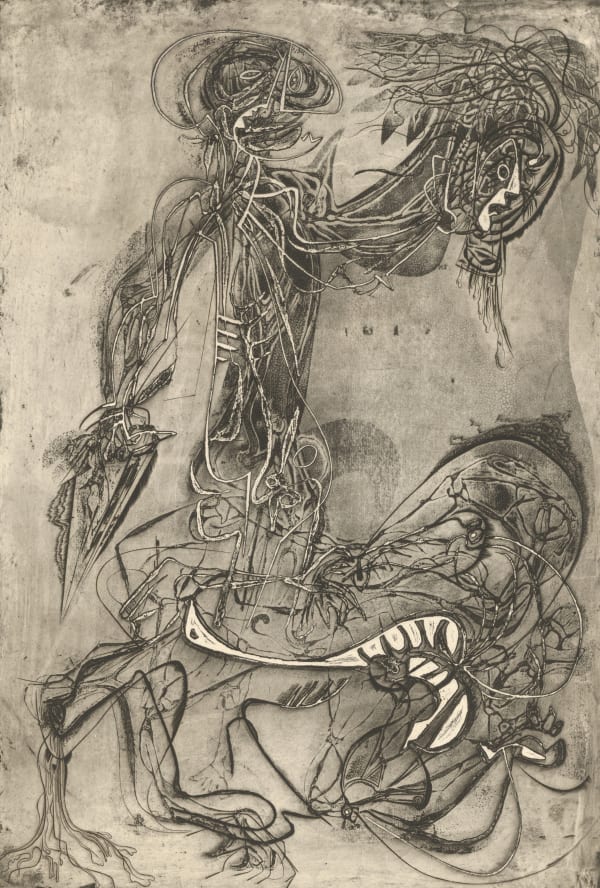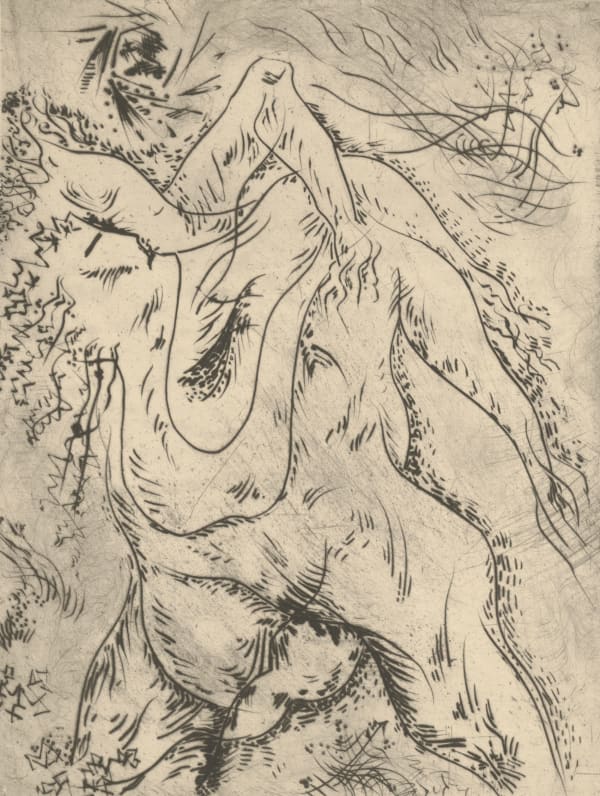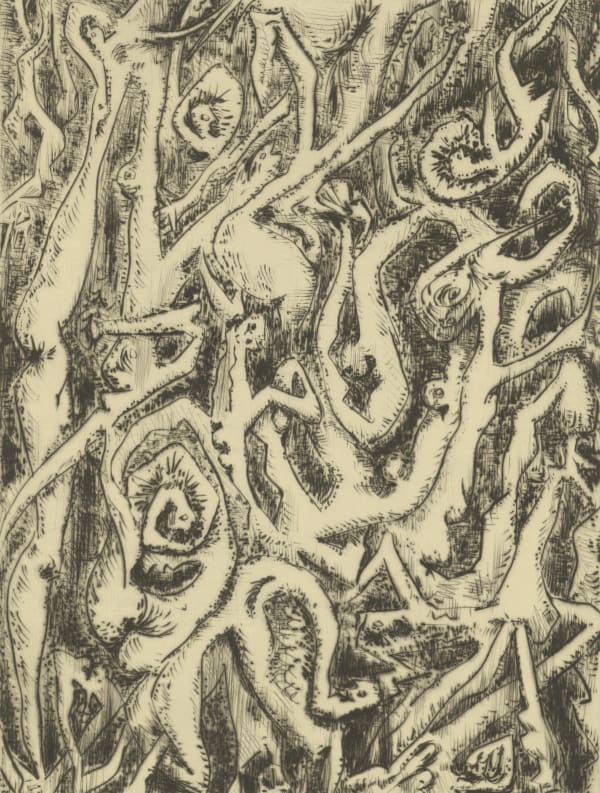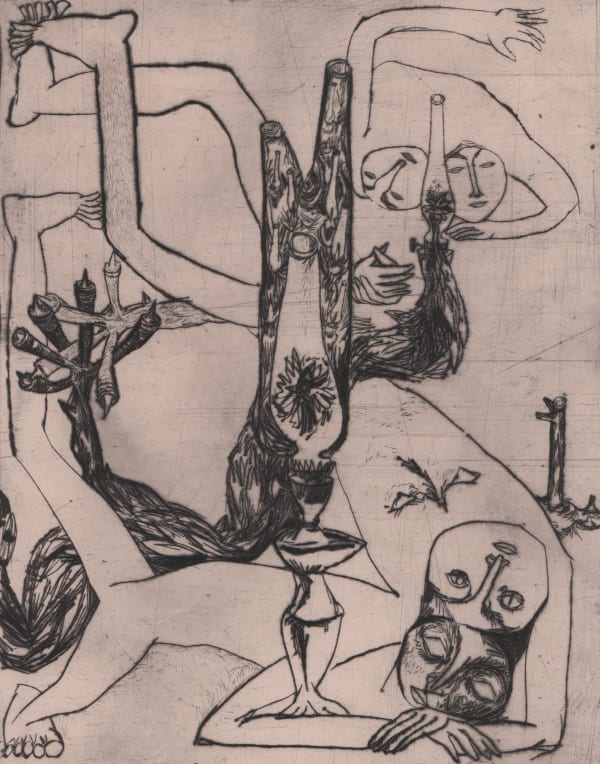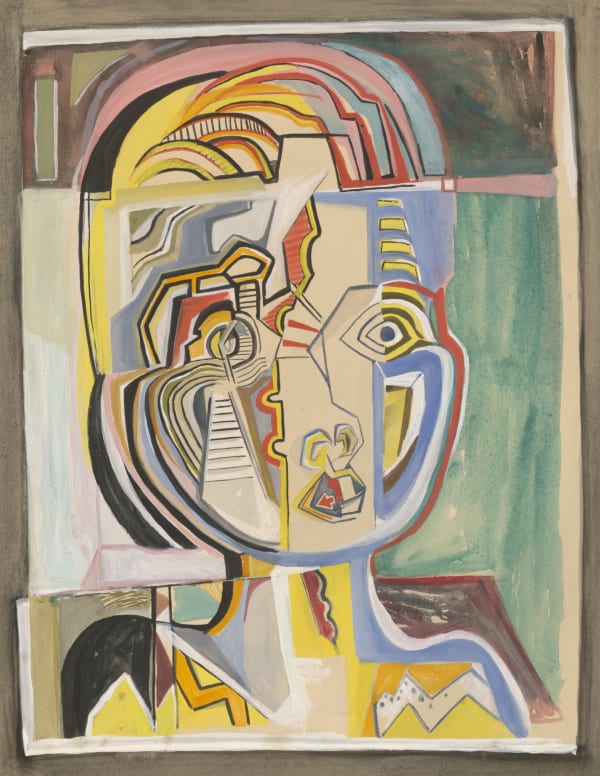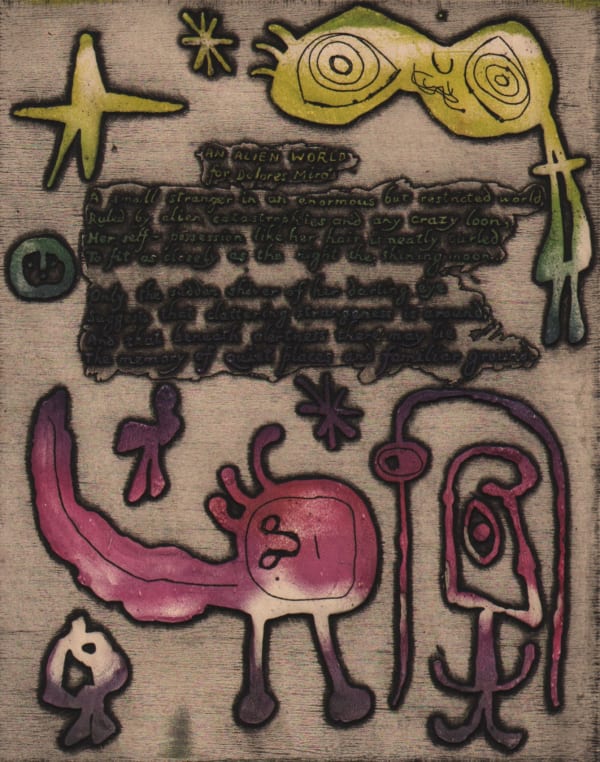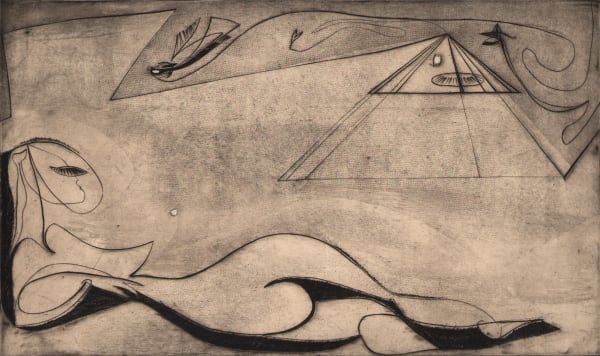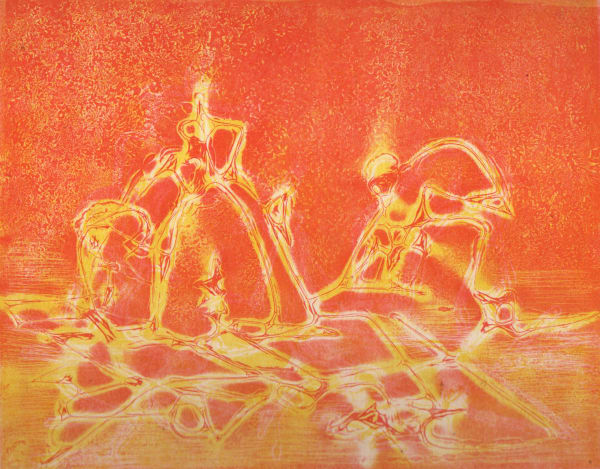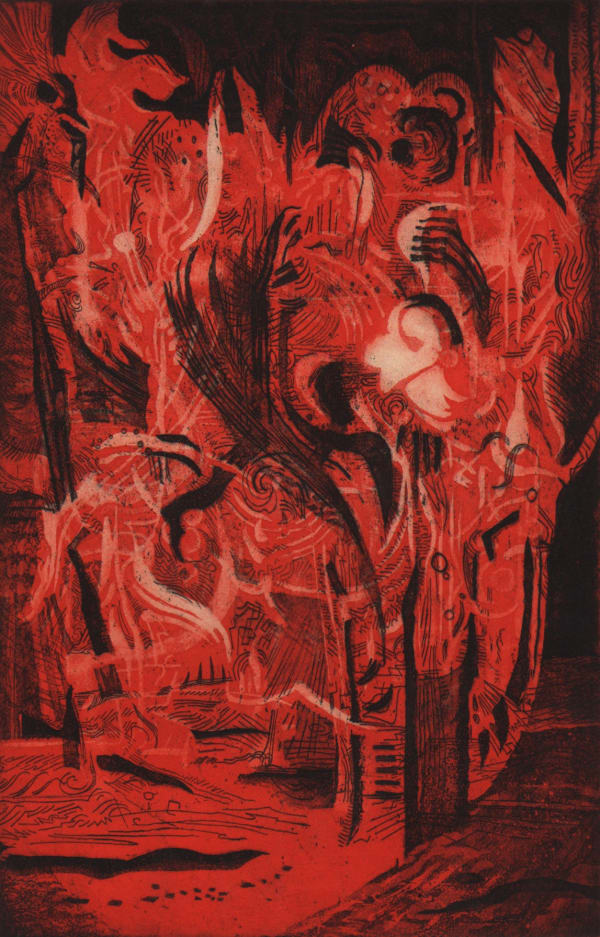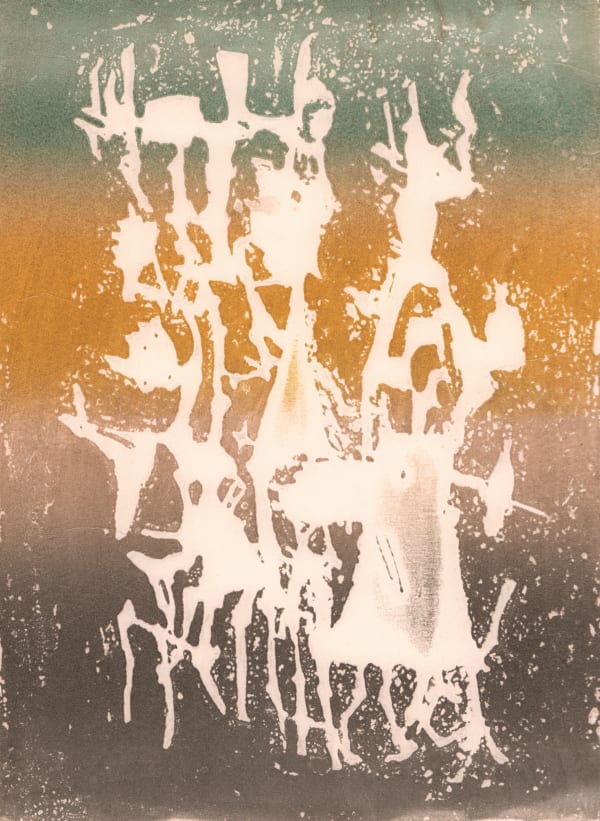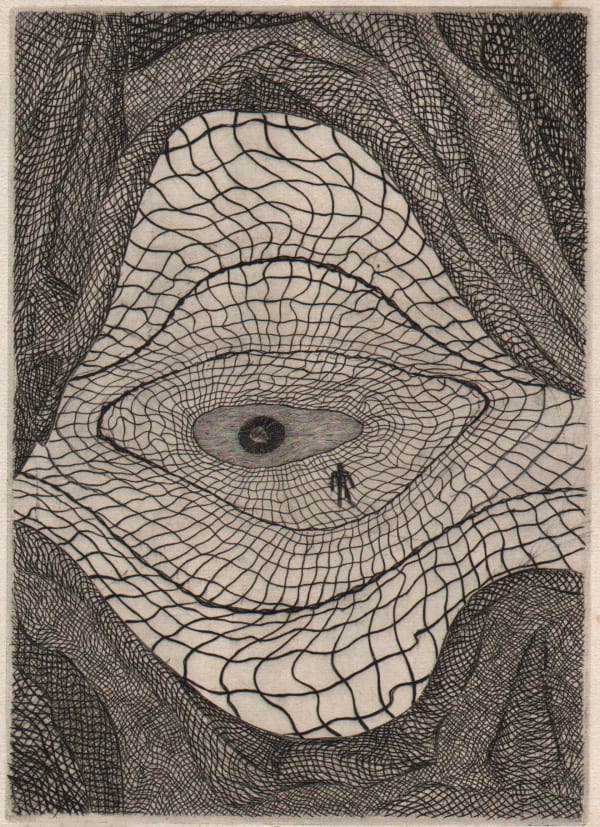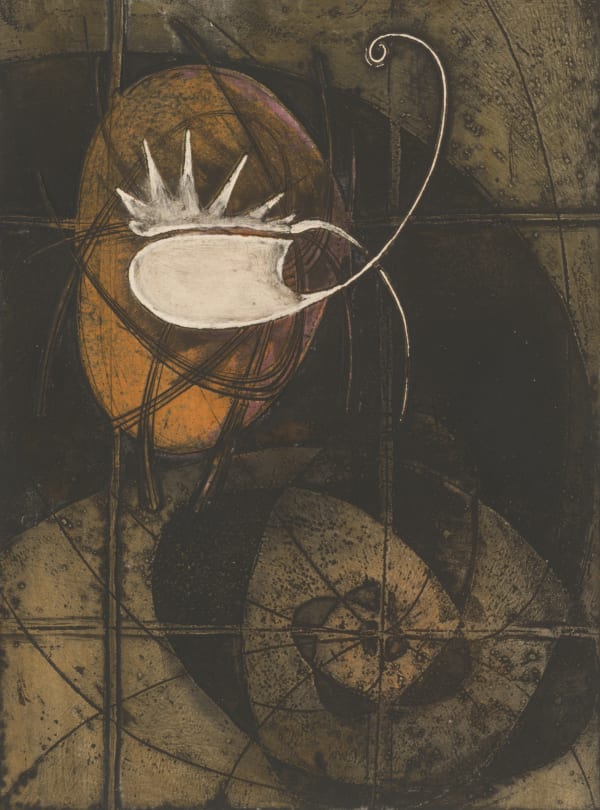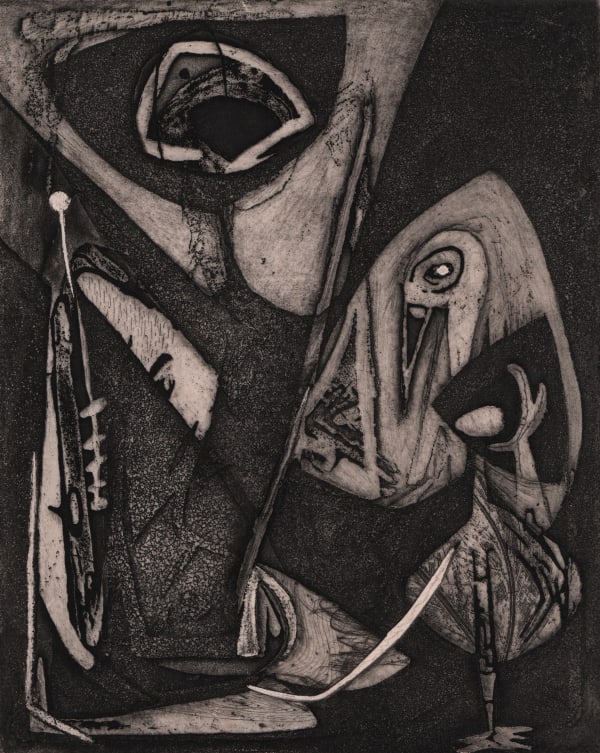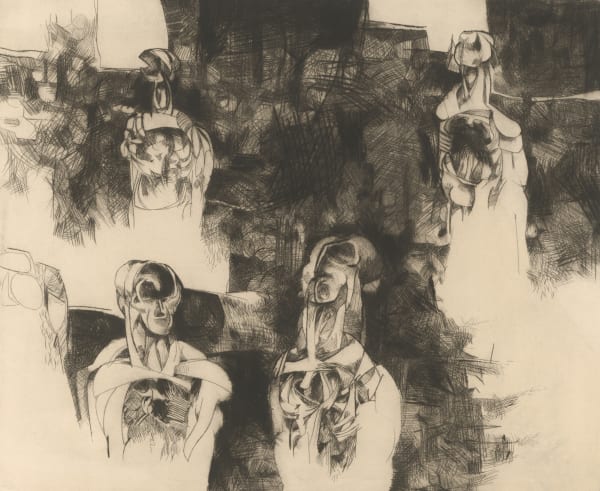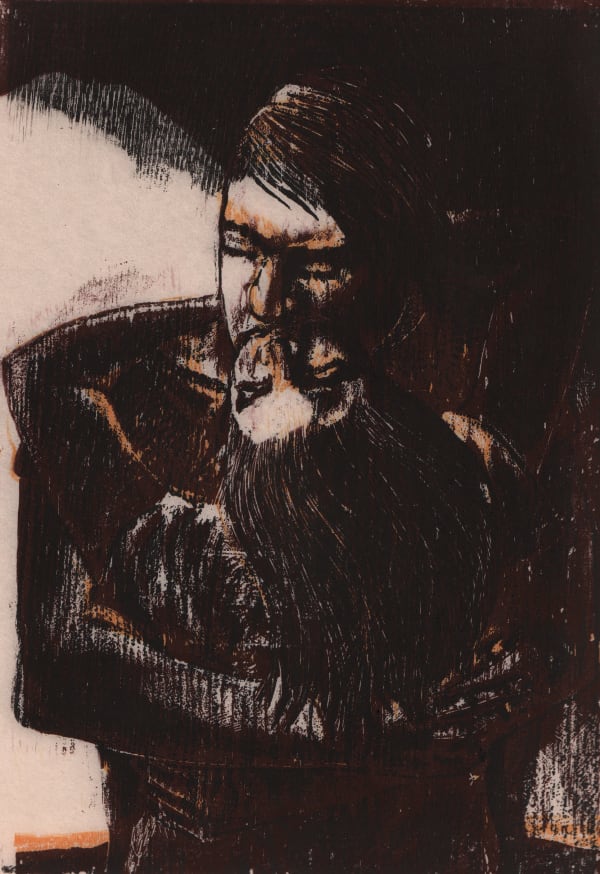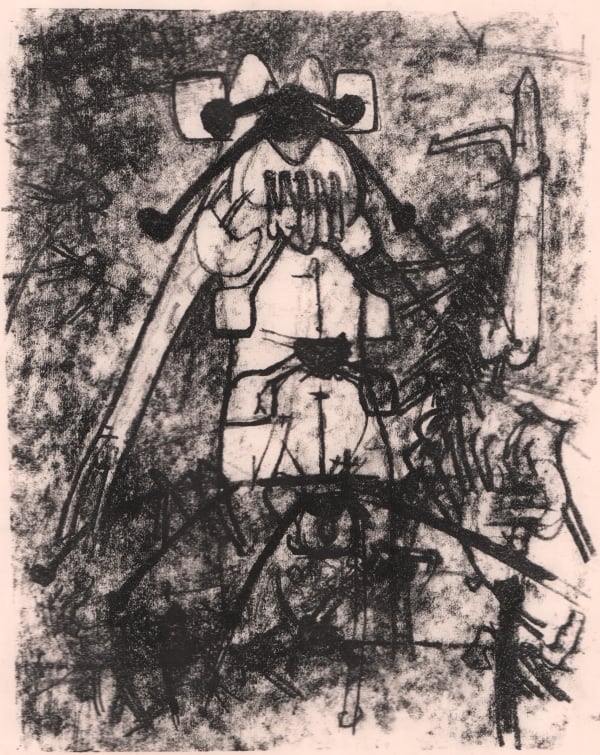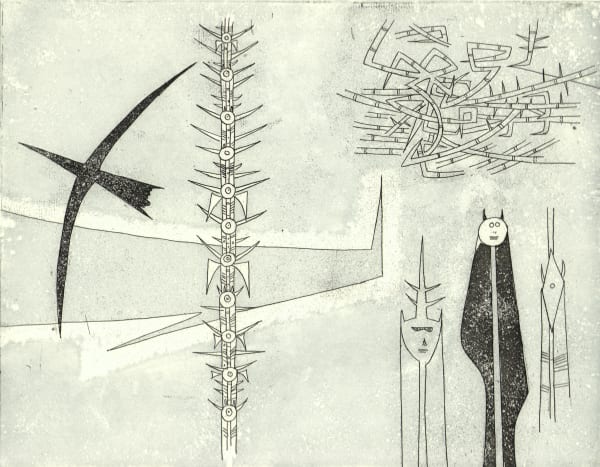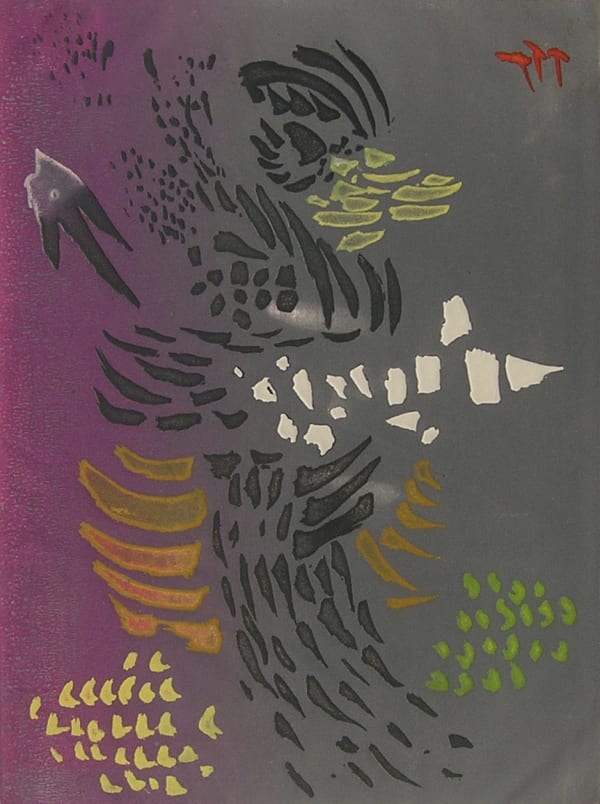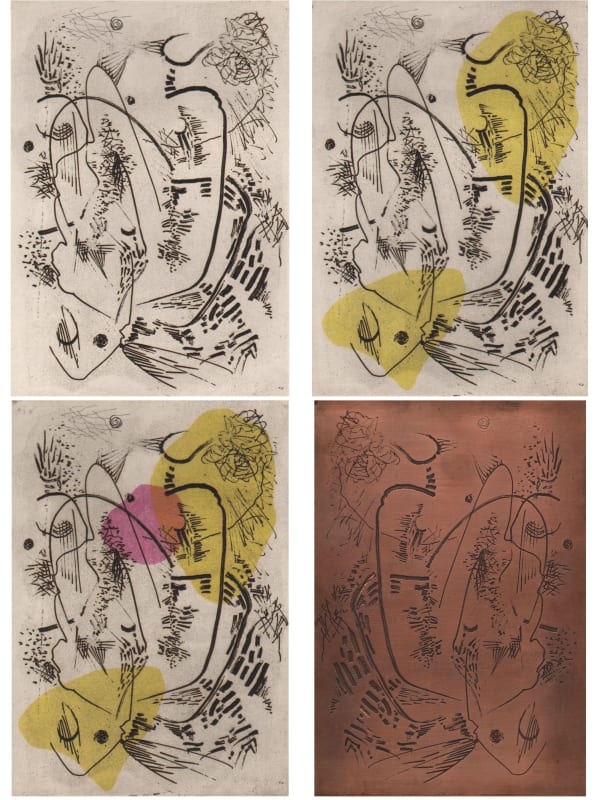-
The Birth of a Movement 1924-1940
First ImpressionsIt began with an engraved line. With burin in hand, a young British artist was breathing new life into a technique 'as old as time' in a recently acquired Paris flat. Hayter arrived in the city in 1926 and quickly established a small workshop focused on printmaking with surrealist leanings, most significantly, the practice of automatism and its ability to reveal one's unconscious desires and fears. The influence of the Atelier 17 on Surrealist printmaking was paramount. From 1926-1939 it was the epicenter for prominent artists (Max Ernst, Andre Masson, Yves Tanguy, John Ferren, Gabor Peterdi, Oscar Dominguez, etc.) and lesser-known artists (Joseph Hecht, Alice Rahon, R.H. Marton, Nina Negri, Dalla Husband, Helen Phillips, Kolos-Vari, Anton Prinner, etc.) officially or unofficially considered Surrealists. -
This early period focused on dream imagery, morphology, fantastic spaces, and imagined worlds. Psychological realms where humans, animals, and spirits assemble. Vacant streets with uninhabited buildings become an empty stage set for one to construct a new narrative. Barren beaches with biomorphic forms create the ideal setting for an overactive, imaginative mind to exhaust itself. Artists would attempt to work in a state of mind similar to when one first wakes, and for a brief moment, you straddle both waking life and the dream world. It is precisely this contradiction of mind states and corresponding subject matter that encapsulates Surrealist virtues.
-
Many artists aligned with preconceived ideas declared by the movement's writers, Andre Breton, Pierre Reverdy, Paul Eluard, Federico Garcia Lorca, for Surrealism was born from the pen. This early literature spread through avant-garde circles in Europe, America, and beyond - changing the direction of many young artists' lives. Helen Phillips first learned about Surrealism through these writings while studying at the School of Fine Art in San Francisco. Upon graduation, in 1936, she took her earnings from a sculpture prize and joined the movement in Paris. Other personalities broke away from what was declared surreal. They chose not to restrict their creativity to meet any standard and therefore allowed themselves to follow their unique path.
-
"The image is a pure creation of the mind. It cannot be born from a comparison but from a juxtaposition of two more or less distant realities. The more the relationship between the two juxtaposed realities is distant and true, the stronger the image will be–the greater its emotional power and poetic reality..." - Pierre Reverdy
-
American Perspective
Struggling American artists - some of whom were recently employed by the newly initiated WPA, highlighting social realist and war propaganda - began experimenting with more personal imagery and surreal concepts. The government-employed Fred Becker had two wood engravings, John Henry's Hand and Monsters included in Fantastic Art, Dada, Surrealism, the breakthrough exhibition at MOMA (Dec. 9, 1936 - Jan. 17, 1937), which introduced America to this revolutionary movement. Becker's interest in Jazz, with its emphasis on improvisation, free association, and rhythm over reason, resonated with Surrealist ideals. Other Social Realists can now be reconsidered through a Surrealist lens. Gan Kolski's personification of a commuter train with its child-like smile created by windows and guard rail brings an intentional irony and almost mocks the actual moment it was made - the stock market crash of 1929. Rockwell Kent, well known for his precisionist engraved woodblocks, reveals deep psychological states in his carved human forms by masterfully using scale, negative space, and chiaroscuro. He almost creates a sense of vertigo for the viewer in The Diver of 1931. Is the figure jumping in or falling?
-
-
 Samuel Joseph Brown, Secrets, 1937
Samuel Joseph Brown, Secrets, 1937 -
 Fred Becker, John Henry's Hand, c. 1935-36
Fred Becker, John Henry's Hand, c. 1935-36 -
 Fred Becker, Monsters, 1935
Fred Becker, Monsters, 1935 -
 Rockwell Kent, The Diver, 1931
Rockwell Kent, The Diver, 1931 -
 Julius Bloch, I Will Lift Up Mine Eyes Unto the Hills, c. 1933
Julius Bloch, I Will Lift Up Mine Eyes Unto the Hills, c. 1933 -
 Rockwell Kent, Bather, 1931
Rockwell Kent, Bather, 1931 -
 Catherine Yarrow, Head with Insect, 1935
Catherine Yarrow, Head with Insect, 1935 -
 Fred Becker, Cafeteria Still Life, 1937
Fred Becker, Cafeteria Still Life, 1937 -
 Buffie Johnson, Untitled, c. 1937
Buffie Johnson, Untitled, c. 1937
-
-
Uniformity vs. IndividualityIt is important to note that the Surrealist movement was full of contradictions and differences of opinions from the beginning, which often led to arguments and excommunications from the group. Hayter, for instance, was unwilling to join the Surrealists until the 2nd manifesto was published in 1929 due to his opposition to the first version's dependence on oneiric imagery. He then permanently left the group in 1938 due to personal and political differences with the movement's leader, Andre Breton. Instead, these differences of style, content, and artistic intention were embraced and celebrated at Atelier 17, which became known for its cooperative, egalitarian atmosphere. It was specifically this openness and understanding that led to the revolutionary and experimental techniques created there that would continue to drive and change the art of today.
-
"Thus, like Masson, I am a dissident surrealist. My work derives from a base of automatism, from the subconscious, but I feel that no artist should be ignorant of the thinking of his time. As I have a scientific and mathematical background, I think this provides a parallel with graphic and plastic research. I have never accepted the oneiric phase of surrealism". - Stanley William Hayter
-
War Years 1935-1948
DestructionWith the invasion of Poland by the Nazi troops in September of 1939, many artists included in this exhibition (Terry Haass, Andre Masson, Gabor Peterdi, Yves Tanguy, Helen Phillips, Stanley William Hayter, etc.) had already fled the continent or were looking for a way to escape. Most arrived in New York City, yet some established themselves in Mexico (Wolfgang Paalen, Alice Rahon, Leonora Carrington, etc.) and the Caribbean (Wifredo Lam). In a time of uncertainty and fear, for many, leaving behind everything they had, one might argue that this forced migration led to one of the most fertile and groundbreaking periods of Western art. -
"I insist on the fact that Surrealism can be understood historically only in relation to war; I mean - from 1919 to 1939 - in relation at the same time to the war from which it issues and the war to which it extends." - Andre Breton, "The Situation of Surrealism between the Two Wars" (a lecture delivered at Yale University in 1942)
-
“I had a feeling at that time that the great question of our era is whether this birth, or rebirth, of Pegasus will be a living lasting success or not. It is not enough to have rockets and bombers flying high in the air while man's creative soul with its dreams is permanently grounded.” - Leo Katz
-
MetamorphosisExiled artists from various countries and cultural backgrounds were now mingling differing artistic styles with young American artists seeking a way forward. Minimal, formal abstraction, early surrealist ideas, social realism, and American war propaganda recently arrived in New York. Artists embraced these various styles and continued to morph, synthesize and reflect their current time. The Art Students League and Stanley William Hayter's Atelier 17, located at the New School for Social Research, became a common ground for like-minded souls. For many refugee artists who were unbearably homesick, Atelier 17 was one of the few places in this "alien world" that reminded them of home. Atelier 17 had previously been a beacon for many Surrealists when located in Paris and continued to be during its decade in America.
-
Post-War 1947-1965
AwakeningSurrealism Beyond Borders, just finishing at the Metropolitan Museum of Art and soon to appear at the Tate Modern, London, makes a case for the worldwide impact of the Surrealist movement, and the works selected indicate that the influence is lasting. Content remains dream-like, thanks to the continued use of automatism and many artists embraced the possibilities of abstraction and exploitation of materials and techniques in new ways. Simultaneous color printing, (also referred to as viscosity printing), advanced by Krishna Reddy, becomes the new standard at Atelier 17. The engraved line becomes embedded into plates crowded with aggressive, deep-bite etching. Images were invented from abstract ideas of human form and personages continue to inhabit the works of Hayter, Roberto Matta, Wifredo Lam, and Helen Phillips. These figurative elements are almost swallowed up by the all over abstract treatment of the surface. -
Dorothea’s Tanning’s first major lithographic project, Les 7 Perils Spectraux, shows a confidence in Surrealism becoming established in the marketplace. And Paroles Peintes indicates solidarity among the leaders of Surrealism. The works of Spanish poet Federico Garcia Lorca, murdered by Nationalist forces at the start of the Spanish Civil War, rediscovered into the 1950s, became a significant influence for artists like Paul Keene. Breton’s manifesto led to a kind of osmosis of Surrealist ideals that continue to fertilize the imaginations of artists today.
-
“Different cultures creating global consciousness that would actualize new possibilities for human action and art making.”
- Wolfgang Paalen
